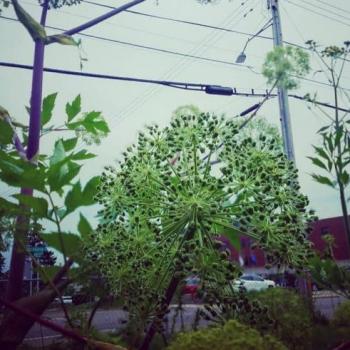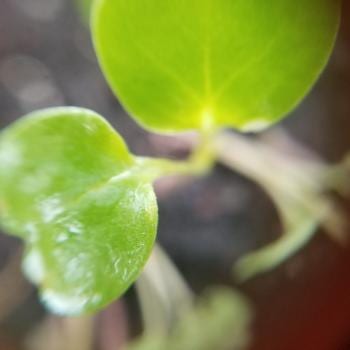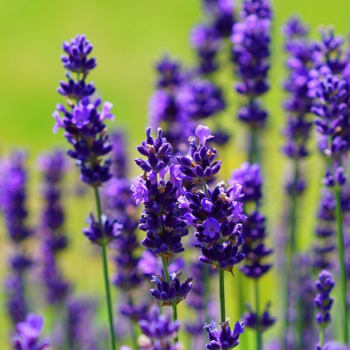Sometimes, to fix the blues you just need a little green. Starting after Imbolc in February, you can repot your houseplants and start new ones while you’re waiting for the ground to thaw enough to plant peas. It scratches that itch for green things when there’s still snow on the ground. I also start a few seeds like leeks, annual herbs, and flowers.
Starting New Plants from Pieces of Old Ones
Look for the root buds.
The trick with starting new plants from bits of old ones is knowing which bit it is you need to pick off and what you need to do with it. Generally, first look to see if there’s any weird little brown sticky out bits at a node. A node, if you don’t know, is the spot where a leaf connects to the stem. In a lot of subtropical, and desert plants, there will also be root buds. They look like little brown things. Some are fat, some are skinny, and yes, I think there’s a lot of room for humor and comparison to certain reproductive human anatomy. I’m not sure how the size of your node root plays out when a plant buys a car.
If you spot a root node, you can often just plant it right in some potting soil and water appropriately. Vining plants often appreciate being stuck in a vase of water. Change the water every few days and in a few weeks, you’ll see a bunch of roots getting larger. The anatomy metaphor is still working for me. I’d say Freyr would be a great deity to pray to in order to get those little brown bits to grow huge and fertile.
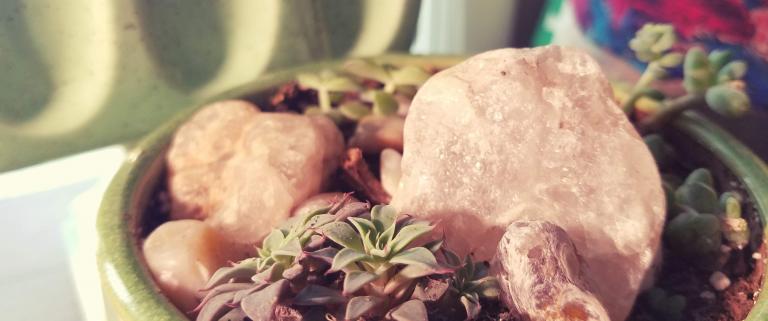
Leaves can work too.
If there are no roots, there are a lot of plants, including African violets, begonias, and many succulents who will root from a leaf. The roots will come out of the spot where the leaf attached to the stem. Succulents will need time away from the soil to cure, like a good whiskey. They need just a few days, it reminds them of the desert. On the other hand, begonias and African violets need moisture, so covering them with a bit of saran wrap or half of a cut two-liter soda bottle will help them.
The most essential trick then is to respect that each plant emerged from a specific ecosystem and when in the fragile state of propagation they need you to recreate that environment.
Transplanting and Splitting Plants to Multiply your Numbers
Look for overcrowded or plants.
This one seems a little more brutal when you start upending plants onto newspaper and whacking them into pieces. In the winter, plants are light-sensitive and often are still in their dormancy, which means they’re less likely to be shocked and die when you move them. You’ll need new pots, new potting soil, and nerves of steel if you’re the sensitive sort. Embrace your death goddess energy.
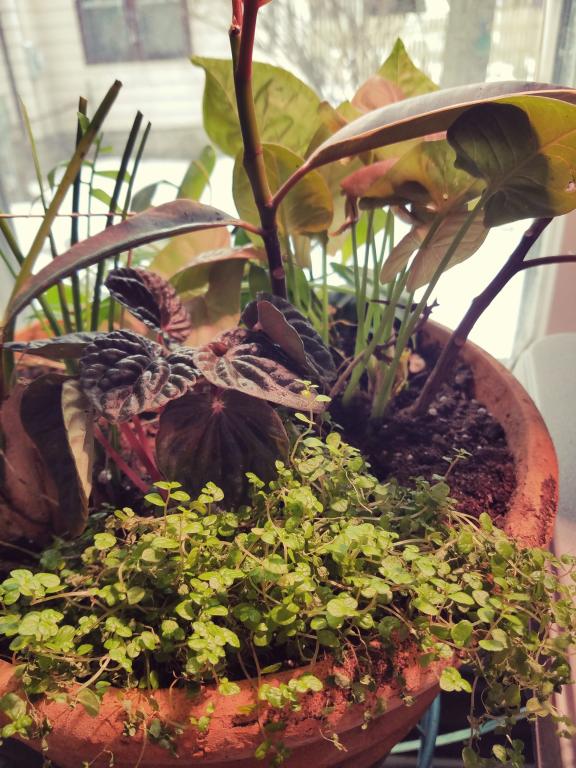
Look for plants that have filled up their pots and are starting to die back as good candidates for splitting. Rabbit foot ferns, spider plants, palms, and some succulents and cacti can do this among others. Also, look for plants that have put up little side shoots, those shoots can be pulled off and planted up to be new plants.
Get your death goddess on.
The trick is to be both tough and tender. Also, it’s a lot easier and less messy to do this when the soil is on the dry side. I use my hori hori to saw through roots. A hori hori is a Japanese gardening knife with a serrated edge. It’s also my primary athame because gardening.
Pot up the newly divided plant into a pot and water well. This is a good time to use a little fertilizer according to the instructions on the package.
Seeds that you Should Start at the End of Winter
With seeds it’s all about timing.
You don’t want to start too many seeds too far in advance of your last frost date because if they stay inside for too long they’ll get too tall and thin like weird alien plants and if you put them outside too soon they may die from frost exposure. There are some seeds that need a long time to germinate and grow. Those seeds are the ones to start in February. Look for seeds that say they need to be started 12 weeks before your last frost date. That’s 3 months. If you start them in mid-February they’ll be ready to go outside in mid-May. Leeks, Snapdragons, Zinnias, and Basil are possibilities.
Make your seedlings stronger.
Wind will make them stronger. To simulate that either put a fan on them or simply brush the seedlings gently with your hands every day. It will make the stems stronger. You can water with cooled chamomile tea which helps prevent fungus and mold issues like damping off. Some plants need bottom heat or extra light to thrive too, and only water when the top of the soil just starts to dry out.
Splurge on a grow light.
I picked up two grow bulbs at Food and Stuff for ten dollars each the other day and put them into my office lamps. It’s been lovely for my plants and for me as well. I’m feeling less sleepy during the day, and they’re perking up beautifully. Once my leek and basil seeds come up I will put that tray directly under the grow light too. When I want to do bigger numbers of seedlings, getting a fluorescent fixture with long grow bulbs works well. I use wire shelving and just hang the lights from the underside of the shelf above. If you use chain and S hooks, you can raise and lower the light so that it stays just above the plant growth. Add a little fan for air circulation and you have an easy and professional seed starting station.
https://www.instagram.com/p/B8odRqNnuwL/?utm_source=ig_web_copy_link
Now you’re ready with lots of Beltane Gifts!
After splitting, starting and seeding a bunch of new plants, you’re probably going to have extras. It’s tempting to skip this process because you don’t really need five more ferns do you? The thing is, without doing this work, your plants won’t be happy. They grow, that’s what they do best. By cutting them back and giving them new soil you’re going to make the plants you have already happier. Having extras is just a side effect. Sure you could throw them out, but here’s a better idea. Get some inexpensive pots from the store, and give those extras as gifts at Beltane. It’s a Mayday tradition to share flower bouquets, but why not give the plant gift that keeps on giving? It’s lovely to bring a tray full of tiny succulents and ferns to your coven, or community. What about giving extras to neighbors?
Learning how to care for plants is a kind of wealth that isn’t measured by the GDP. It’s measured in beauty, food, and medicine, which is priceless.




